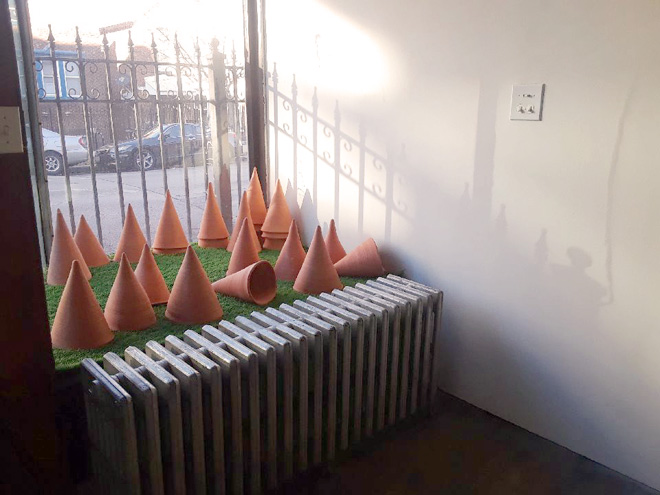
Sometime in October, Paul Hopkin invited me to include work in a December/January group exhibition at Slow Gallery. The theme and title was Saturnalia, the ancient Roman predecessor of Christmas. Although I was still preoccupied with another project at the time, I wanted to make something new for this show. By mid-November I was throwing around ideas and experimenting with clay. The last time I had done anything meaningful with ceramics was probably in 2012. So why clay? Saturnalia called for clay, specifically terracotta.
Saturnalia was an ancient Roman festival that took place around the December solstice as a way of showing reverence to Saturn, the god of abundance and prosperity, agriculture, the seasons, and cycles of renewal. The holiday was celebrated with a large banquet, gift giving, a temporary break from social hierarchies, and lots of wild partying. A common sight during Saturnalia was the pileus hat, a simple pointy felt cap normally worn by freed slaves. Various people wore these hats during Saturnalia regardless of their social status; some people cross dressed; masters served their slaves. Gag gifts made of terracotta were exchanged. The gifts were called sigillaria.

Having learned all of this from Paul, the exhibition curator, and from a friend in classics at U of C, I considered making some ceramic gifts to hand out to people during the exhibition. I was also very interested in the pileus cap as an embodiment of freedom and an object that comes in direct contact with the human body. I imagined making hats out of terracotta and handing them out as gag gifts for gallery visitors. The only way this would work is if I made a lot of them—as many as possible. Not only was Saturn the god of abundance, I needed enough hats to correspond to the approximate number of people attending the opening reception. I wanted to create the appearance that gallery visitors had taken them off and were walking around with their hats piled up on the side.
The opening reception was five weeks away. I considered the coiling method to build the hats but quickly realized wheel throwing would be much faster. I threw a large cylinder and collared it into a conical form. After a few tries the process became straightforward. Wheel throwing is such a somatic activity; like playing a musical instrument there is so much embedded in motor memory, so much that comes from practice rather than calculation. All of the throwing I’d done in the past was going into these forms. In fact, a colleague offered to throw a few of them for me, and his three hats immediately stood out from the group as originating from a different hand.
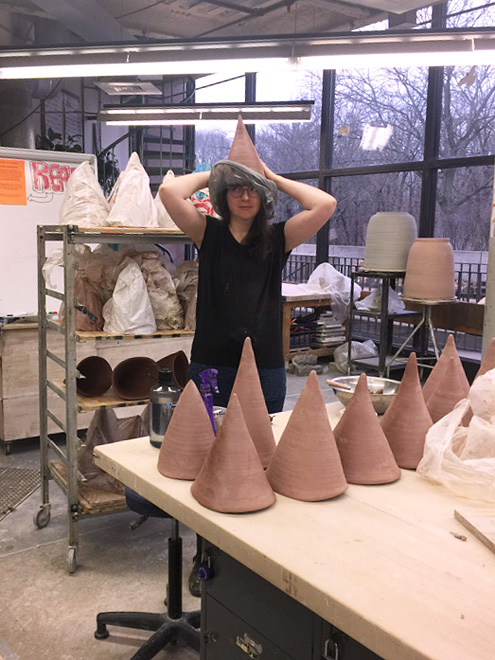
After I made my first few hats, several people in the community ceramics studio began noticing and asking questions. I suddenly became the resident weirdo who made terracotta cones instead of normal pottery. It took some time for people to appreciate the goofiness and warm up to this project, which finally happened once they saw me forming each freshly thrown hat by pressing it against my own head. Although the project was simple, there were lots of technical logistics I needed to figure out: how much clay to use for each one (I landed on 5.5 lbs and made 60 hats), how to dry them in a position that prevents warping, how to compensate for shrinkage, how to package for shipping, where to find storage in the studio… My first few forms were about as tall as they were wide, bulging slightly. People commented that they looked like chocolate chip kisses. As I gained experience, the forms grew taller, straighter, and pointier; they became witch hats, dunce caps, elf hats. Many of these associations were surprisingly accurate since the pileus was a direct predecessor of hats attributed to Santa, elves, wizards, gnomes… In fact, I imagined them as gnome hats made of terracotta. I started referring to them as “garden gnome hats.” People asked when I would make the bodies.
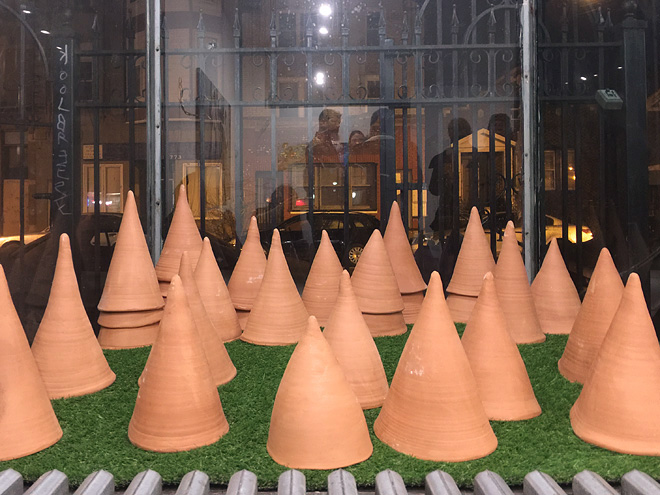
This, in part, led to my decision to line the gallery with artificial grass. I was thinking of ceramic gnomes and planters, both of which existed in Rome (yes, ancient Romans had garden gnomes!), but I also imagined the changing seasons and all things associated with Saturn. The installation needed to feel festive and green, renewed for the solstice holiday. I staked a claim to the gallery windows. The setup was perfect: the hats welcomed visitors as they approached the gallery, but the installation also looked like a pile of mass-produced articles in a shop window. Unlike Saturnalia, Christmas is a holiday for which people go shopping. All rituals and traditions change over time; I wanted the wariness of a tradition evolving under capitalism. The title of my installation, Get One Free, references the original use of these hats in ancient Rome. It is also an anti-capitalist challenge to the common shopping dictum. Guests were invited to wear the hats, play with them, and take them home.
Saturnalia closes on January 26th, 2019.
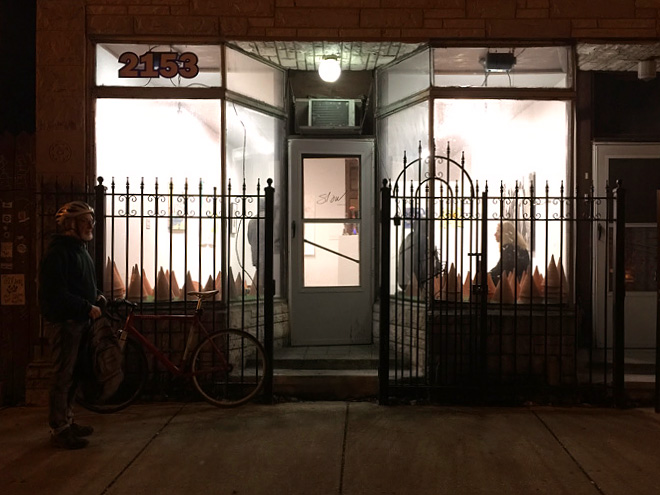

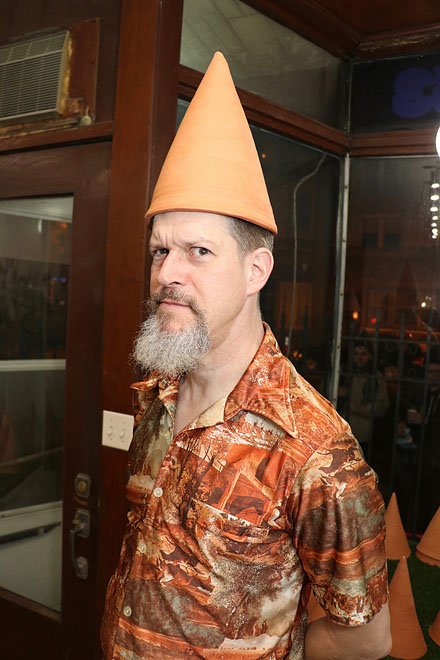
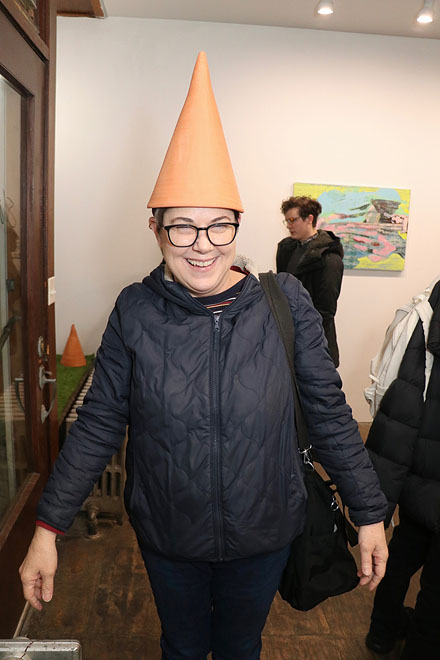

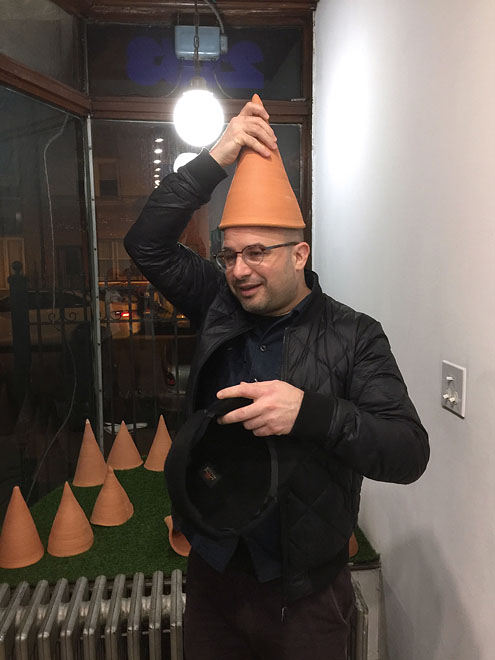
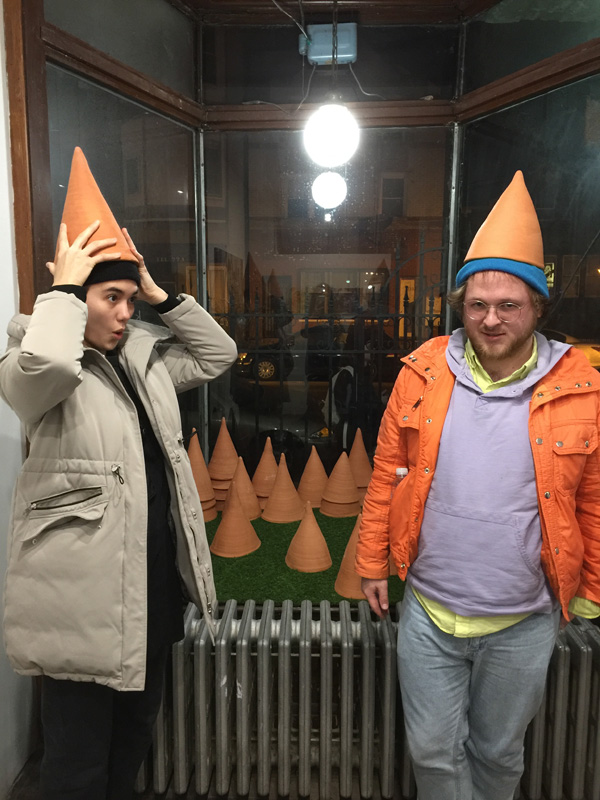
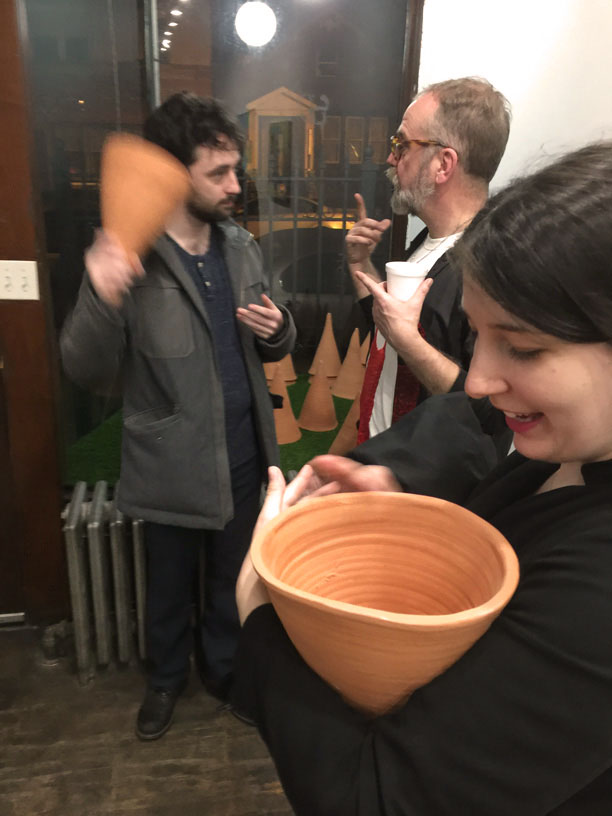
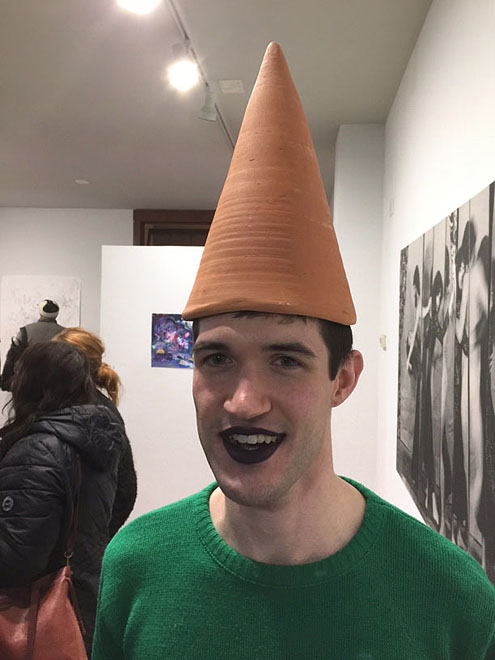


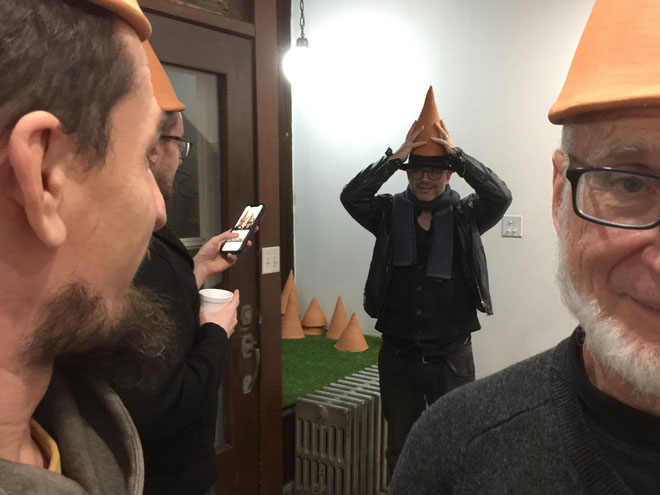

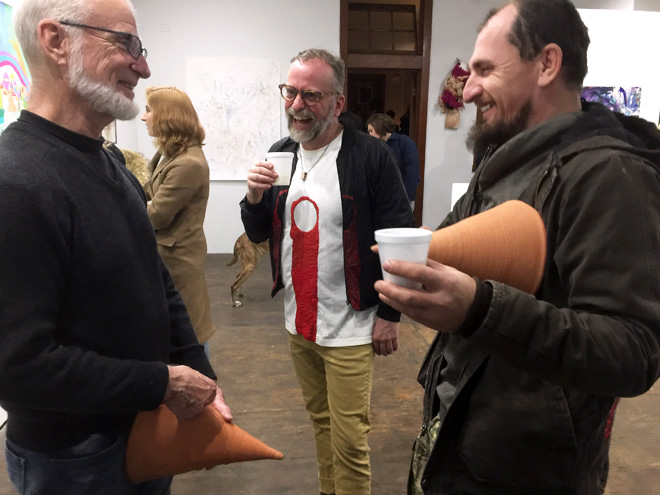
Photo Credits: Title photo at the very top © Paul Hopkin. Me forming a hat © Robert Mishlove. First three portraits wearing hats at the opening © Jeffrey Grauel. The rest © Vesna Jovanovic.